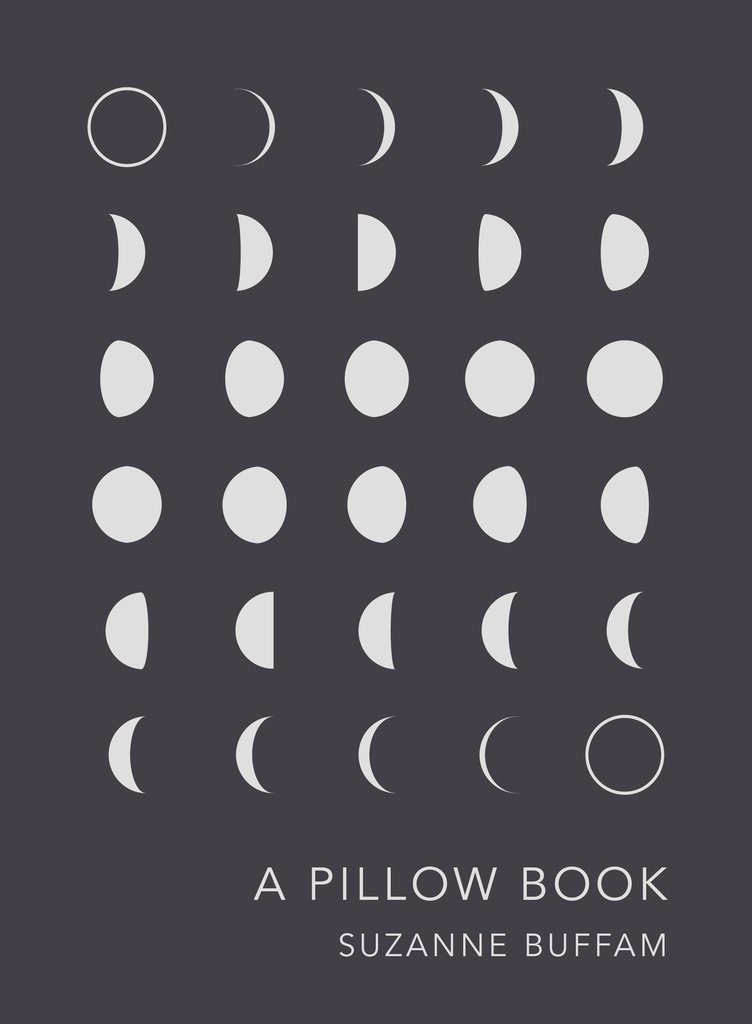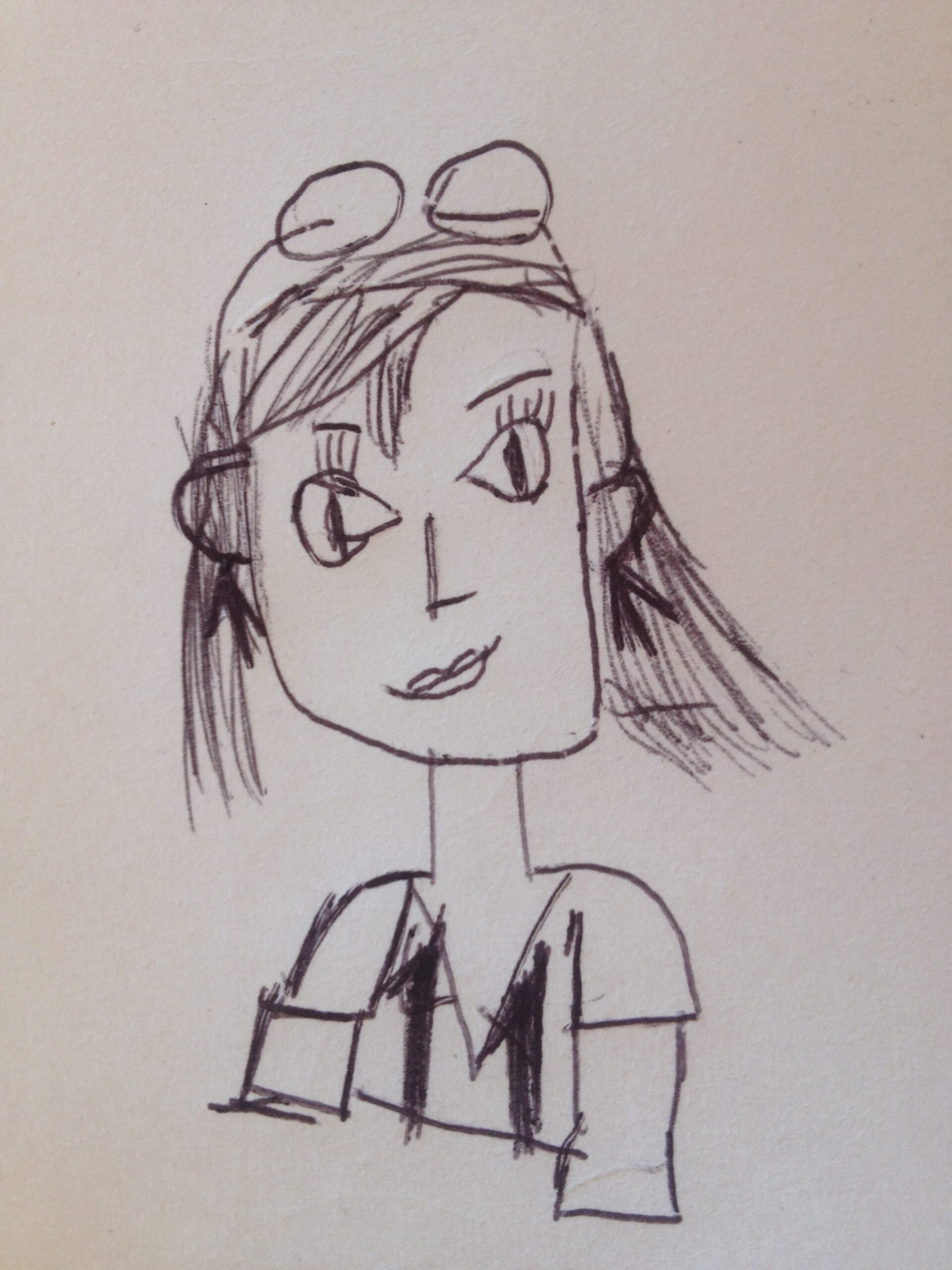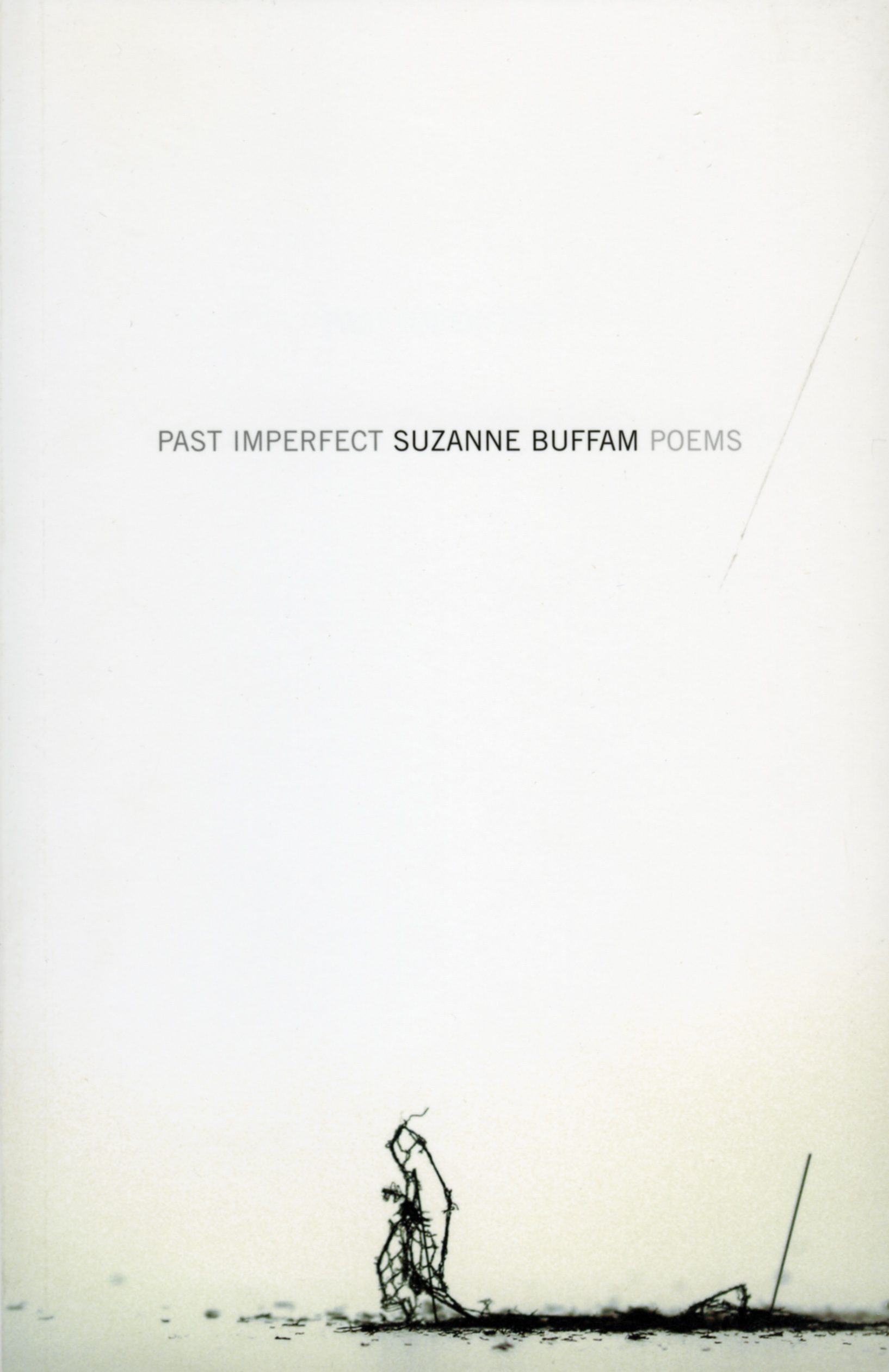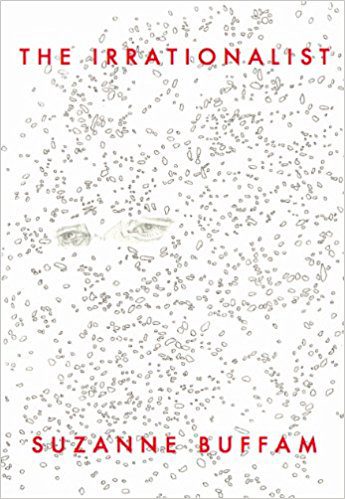
Ever since I was a child, a good night’s sleep has eluded me. When my mom tucked me in bed at night, I peppered her with questions to make her stay longer. Once alone, I listened to my parents talking downstairs, whispered to my cat, and tried to find shapes in our abstract hallway wallpaper. These days after midnight, as my husband and teenage sons sleep peacefully, I often roam the hallways, clean out junk drawers, or watch strings of NCIS reruns. Well acquainted with sleeplessness, I felt I found a friend when I picked up Suzanne Buffam’s latest work, A Pillow Book. She speaks the language of insomniacs. There’s no doubt she gets what it’s like to be awake all night fretting, as worry about not sleeping mounts with each turn of the clock.
A smattering of lists, essays, commentaries and poems, A Pillow Book follows the tradition started in late 10th Century Japan by Sei Shōnagon, a court lady who recorded her thoughts observations, and opinions. Buffam’s current-day musings are witty and insightful and at times frenetic, echoing the whirling mind of a wide-awake insomniac. Her work marks a natural departure from her two previous poetry collections, Past Imperfect, which won the Gerald Lampert Memorial Award and The Irrationalist, shortlisted for the Griffin Poetry Prize.
A Montreal native, Buffam lives on the South Side of Chicago with her husband, the poet Srikanth Reddy, and their daughter (“Her Majesty”). Buffam’s poems have appeared in Poetry, jubilat, Denver Quarterly, and Prairie Schooner and the anthology Breathing Fire: Canada’s New Poets. This past fall, she returned as a visitor to the Iowa Writers’ Workshop, where she earned an MFA.
Here in the post-election fog, Buffam discusses through email her fascination with pillows, new and ancient; sleep remedies that don’t work; and the worries that now occupy her mind and keep her from a good night’s sleep.
***
The Rumpus: Your book was crafted in the style of The Pillow Book by Sei Shōnagon, a Japanese lady-in-waiting to Empress Consort Teishi. What made you decide to write a book in this tradition? This is a departure from your previously published poetry books. How was it to try a new genre?
Suzanne Buffam: The book found its form very gradually, over the course of several years. While it does look on the surface like a departure for me, from within, it felt more like a slow evolution from earlier work. The lists came first, and were basically all I wrote during the disorienting blur of early motherhood. At first I saw them as a stand-alone sequence. Their brevity and levity sprang from the same playful impulse that gave rise to the short “little commentaries” in my previous book. When I finally felt capable again of composing complete sentences, a few years later, I started in on a longish prose meditation about pillows, which I envisioned as a sequel to an earlier poem about trying to conceive a child. I figured the new poem would be about five or six pages long, and would be called Pillow Talk. At some point in the glacial accumulation of that work, maybe another year or two in, I picked up Sei Shōnagon’s book and discovered that I had in fact been writing a kind of “pillow book” all along. Unlike that book, though, whose original order and scope is long lost to us, and which greets readers today as a genuine miscellany, my book attempts to describe an arc of feeling in time, if not exactly an unfolding narrative. This meant innumerable hours of shuffling sections around, rereading drafts in the dark on my Kindle, cutting and pasting and reordering, only to discover new holes where as-yet-unwritten pieces needed to go. I discovered that writing a very long poem is a lot like writing a very short one. It just takes a lot longer.
Rumpus: Early in the book, a string of insomniacs are mentioned, such as F. Scott Fitzgerald, who wrote lists when he couldn’t sleep; Abraham Lincoln, who took midnight walks; Henry David Thoreau, who wrote in the dark and once used a pillow of bricks. Would you place yourself on this list and if so, what do you do during those long, still hours in the middle of the night when sleep won’t come?
Buffam: I do know a few truly world-class insomniacs. Blessedly, I would not count myself among them. That said, I’m certainly well-acquainted with long stretches of poor sleep. I began to write this book in the midst of one, as an attempt, in part, to provide myself with something non-threatening to contemplate in the dark. I found it soothing, for example, to turn my thoughts, while lying awake, away from global atrocity, my toddler’s future prospects on this catastrophic planet, her need for new socks and underwear, and my own innumerable failings as a writer, mother, wife, teacher, and citizen, towards something serenely oblivious—such as, say, an ancient wooden pillow in a Mesopotamian tomb.
Rumpus: A consistent “character” throughout this work is the pillow. The “oldest living pillow” found in an Egyptian tomb is “a smooth block of unpainted wood with a wide crack running through its middle and a shallow indentation on top.” Other pillows highlighted include Shōnagon’s, crafted from polished bamboo, and one found among rubble in Iraq, made of petrified goat hair and straw. How extensive was your research? Did you visit museum exhibits?
Buffam: I prefer, whenever possible, to stay home. Having a child, in that respect, has suited me perfectly. I did extensive research for this book, and spent untold hours of my daughter’s infancy and toddlerhood down the rabbit hole of promotional videos, medical forums, museum catalogues, chat rooms, outdated encyclopedias, listicles, and scholarly articles from digital archives around the world, all without setting foot beyond my slippers. The digital age is often much-maligned, and no doubt for good reason, but then again, all one has to do is glance at the countries listed in an index to Dickinson’s poems—from Ararat to Zanzibar—to appreciate the value of armchair travel.
Rumpus: The passage, “Kings and commoners alike have known the value of a good pillow forever. From Quito to Cairo to Chicago to Xiangyang, examples can be found in museums all over the world. During my sleepless nights I try to imagine the whole collection.” This passage places pillows in a different context, the pillow an enduring staple throughout history. What fueled your fascination with pillows? How did you come to have pillows as the unifying thread in this book?
Buffam: There’s a Flannery O’Connor quote that I love: “The longer you look at one object, the more of the world you see in it.” Well, as I mentioned, my relations with my pillow have long been vexed. As the site of many long hours of widespread self-doubt and anxiety, the literal site of our dreams, and the final resting place for humans’ poor, top-heavy crania, the pillow began to seem, the longer I stuck with it as an object of study, an increasingly rich symbol for the intersection of the various psychic, material, and spiritual worlds we humans inhabit. As a piece of human technology, pillows also happen to be exquisitely simple and elegant, so my attraction, on some level, was aesthetic. The first pillow I ever truly fell for was a Song Dynasty ceramic headrest on display at the Art Institute of Chicago which I saw it for the first time about thirteen years ago. I fell for its name as much as for its form. “Pillow in the Shape of a Boy Supporting A Cloud-Shaped Headrest,” read the little black plaque behind glass. I carried that name around in my wallet on a little torn slip of paper for years, thinking it might someday become the title of a short, lyric poem. It never did, but it eventually showed up towards the very end of this book, and was the last pillow I looked at.
Rumpus: Did all this talk of exotic, fancy pillows lead you to upgrade your own?
Buffam: I guess technically you could say that I downgraded, because my new pillow—filled with loose buckwheat hulls—was, relatively speaking at least, fairly cheap.
Rumpus: Please tell me about the pencil sketch on the inside cover of A Pillow Book.
Buffam: You must have the Canadian edition. That’s a flattering portrait of the author, drawn by her daughter, age five. As the source of much adulterated dialogue in the book, I felt she deserved the last word.
Rumpus: Do you share some of the same struggles as the narrator, such as balancing a writing life with raising a child, marriage, teaching and other household chores?
Buffam: Yes, you could safely say we share a few salient biographical details, although many of the incidents themselves were invented or elaborated for effect.
Rumpus: Are you still teaching at the University of Chicago? How does teaching help your writing process?
Buffam: I quit my full-time lectureship at University of Chicago a few years ago, and have been piecing things together with grants and part-time teaching gigs since then. This fall I was a visitor at the Iowa Writers’ Workshop, where I studied almost twenty years ago myself. Teaching forces me out of my reading habits and calls my instincts into question, which are almost always good things, but it also eats up a lot of mental space—to say nothing of writing time—so I find it hard to sustain the two simultaneously.
Rumpus: How did you come to be a poet and writer?
Buffam: I wrote a ten-page “novel” in third grade. I took some time off after that, but I always come back to writing as a way to make sense of my place in the world.
Rumpus: Which writers do you most admire and why? What kinds of books do you like to read?
Buffam: I like to read books that give me pleasure on the level of the sentence. That’s a pretty broad field, I realize, but it does cut away fairly vast swathes of printed material. At the moment, I’m rereading To the Lighthouse, which I seem to do every five years or so. Also at hand on my nightstand are Lucia Berlin’s brilliant stories in her Manual for Cleaning Women, Joy Williams’s deeply unsettling stories, The Visiting Privilege, and a darkly comic novella, Down the Rabbit Hole, by the Mexican writer Juan Pablo Villalobos.
Rumpus: So much of this book seems like it stemmed from wide-awake, late-night musings with humor shining through:
My husband often laughs in his sleep. Sometimes he mutters. Occasionally he carries on a conversation with me for several blissful minutes in his dream. These are mysterious exchanges. His words seem uttered from the far side of the universe. As for me, I often wake drenched in sweat, and flip my pillow over only to discover it hot on both sides. This condition, I have learned, will only worsen as I round the bend toward menopause, a word I cannot utter, I find, without pausing to consider the men who dreamed it up.
I don’t exactly have a question about this passage, but I can totally relate. Do you have any comments on it you’d like to share?
Buffam: I suspect a lot of women can relate to this. Recent studies do seem to suggest that a major risk factor for insomnia is being female. Why exactly this is so isn’t clear, but I suspect it has something to do with the vast amounts of multitasking with which women’s daily lives are encumbered.
Rumpus: One scene depicts the narrator at lunch with her editor and he asks if she has children. When she responds no, he tells her that she’d be finished as a writer if she did. Do you think this scene will resonate universally with women writers? If so, why are children still considered an impediment for women writers or for women in any career?
Buffam: My hope is that this will resonate less and less, over time. That said, I fear there’s a fairly persistent double-standard in place around the world regarding the respective professional and domestic expectations of mothers and fathers. For my part, what made this book possible was the luxury of full-time childcare during my daughter’s early years. So there are questions of privilege and class at stake here as well.
Rumpus: It seems that the narrator’s husband doesn’t share the same career conundrum. A poignant moment happens when she visits the campus bookstore and asks for her books. The salesperson responds, “We used to have two copies of the first one, he says, but no one bought them, so we sent them back last June.” Then she spies her husband’s latest book on the Staff Picks shelf. This dismissal of her work seems to be carried through A Pillow Book. Is there an underlying message?
Buffam: Well, there’s clearly a degree of simmering resentment of male privilege running through the book. I joked at a reading recently that the whole book was basically a long litany of marital complaints, and while that’s part of it, for sure, there’s a larger critique at work, aimed at the social structures and assumptions that shape our all lives and which are hard to dismantle, however enlightened or progressive we may imagine ourselves to be.
Rumpus: Then there’s then such a human response when she returns home and orders an ivory satin pillow case online, one that promises to reduce hair loss. Devastating moments are juxtaposed with humor and wit. Is this an overall commentary on contemporary society? Frustration and sadness can be eased by placing a quick order from Amazon?
Buffam: It’s no surprise that the very same structures that isolate us so efficiently—and fill our lives with anxiety—are the ones that happily sell us expensive balms. Having succumbed all too often to the lure of retail therapy, I’ve made an effort of late to leave my house when there’s something I want. One result, I have found is that I buy a good deal less.
Rumpus: We never know the name of the narrator and the husband is only referred to as “my husband,” and he’s usually seen sleeping peacefully while she struggles to slumber. Their daughter is called “Her Majesty.” These titles create a distance between the narrator and her family for the reader. Was that your intention?
Buffam: Yes. Basically, I lack the both the will and the imaginative resources to conjure invented characters from whole cloth, so the book borrows heavily from my own biographical material. But this material is considerably transformed in the writing, and the characters and events are, to varying degrees, fictionalized.
Rumpus: At times, it seems the only thing standing in the way of the narrator succeeding in life and her career is a good night’s sleep. Can that be the simple antidote?
Buffam: It’s hard to overstate the value of a good night’s sleep, in terms of mood, productivity, mental sharpness, and overall health. The problem of insomnia does have something of the old chicken and the egg paradox at its heart.
Rumpus: No matter how many lists (Home Appliances A to Z, Dubious Doctors) and remedies (melatonin, NyQuil, Lorazepam, Celestial Seasonings Sleepytime Peach Tea) the narrator attempts, sleep remains elusive. And no matter how much musing on sleep is offered, it remains an unsolvable mystery. “Those who sleep fewer, on average, than six hours every night, life, on average, 20% shorter lives. Without dreams, we die quicker. No one quite knows the reason for this. We know less about what happens on our pillows at night than what we know about the dark side of the moon.” Did you investigate sleep problems and remedies extensively for this book?
Buffam: Yes. The global field of sleep medicine is growing at an astonishing rate. I read several books on the subject, and spent countless hours scouring the Internet. There is literally no end of resources out there, if you want to learn about sleep and its attendant afflictions. There are endless “solutions” available, too, but somehow our problems persist. One of the best books I read about the ways in which sleep is eroded today by market pressures and corporate greed—and about how sleep itself can be conceived as an act of resistance—is Jonathan Crary’s 24/7: Late Capitalism and the Ends of Sleep. I also loved A. Roger Ekirch’s At Day’s Close: Night in Times Past, which is a wonderful anthropological/sociocultural history of life’s often overlooked underbelly.
Rumpus: In a previously published interview, you said that your main goal as a writer is to keep surprising yourself. Did you succeed with this book? If so, how? Now that you’ve written a book in a not-so-traditional genre, where do you go from here?
Buffam: Throughout much of the process of writing it, I really had no idea where this book was headed. So yes, really, the whole undertaking was an exercise in discovery—to say nothing of patience. I have no idea what I’ll write next, but chances are it will take some time for me to arrive at its form.
Rumpus: Since completing A Pillow Book, have you been able to get a good night’s sleep?
Buffam: I sleep best when my days are spent writing productively. Now that the book’s done, and my days, post-election, are filled with a whole new flood of worrisome tidings, some of my old sleep problems are back. That said, I did develop a number of helpful techniques to cope with those old nocturnal anxieties. One of the worst things to do when not sleeping, I’ve learned, is worry about not sleeping.
***
Author photograph © Nick Twemlow. Illustration by Her Majesty © Mira Buffam Reddy.








